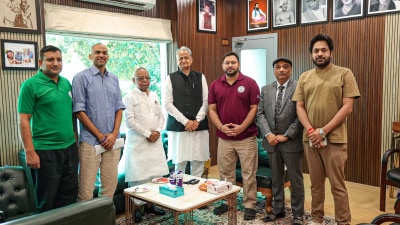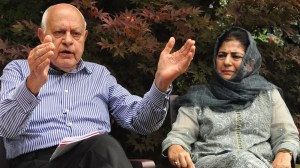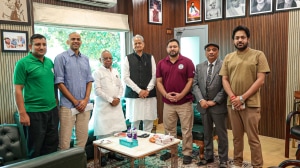Farmers looking for alternative to paddy
GURDASPUR, Nov 18: Farmers in this district are a worried lot. In spite of an increase in the area used for the cultivation of paddy crop, t...

GURDASPUR, Nov 18: Farmers in this district are a worried lot. In spite of an increase in the area used for the cultivation of paddy crop, there has been a considerable decline in the yield this season.
Chief Agricultural Officer Mohinder Singh Chahal said that total land under paddy cultivation was 1,91,000 hectares this year, as compared to 1,82,000 hectares last year.
District Food and Supply Controller Raj Kumar Bibra told ENS that while last year a total of 4,45,747 metric tonne of paddy was procured by agencies and millers in the district, the total procurement of paddy was not expected to exceed 4,10,000 metric tonne in the current season.
Though the reasons for the decline in paddy yield are many, the main cause is attributed to the Tungra virus, which turns the leaves of paddy plants yellow and had attacked about 30 to 40 per cent of the paddy crop in the district. The virus had remained a mystery till quite recently.
Sehdev Singh, a farmer from Kaler Kalan village, near Dhariwal, held agricultural experts from Punjab Agricultural University, Ludhiana, responsible for the fall in the paddy yield. He said farmers were asked to sow paddy between June 20 and July 10, and the paddy sown during this period had proved to be the worst affected.
He also alleged that a particular variety of seed — Paddy PR 111 — which was recommended by PAU, proved to be a failure as it was badly affected by the Tungra virus. Similar was the case with PR 113, also recommended by PAU experts, he added.
Ludhiana: Reacting to the allegations levelled by state farmers regarding the advice of PAU scientists to sow paddy between June 20 and July 10, Dr Kirpal Singh Aulakh, Director Research, PAU said it was not for the first time that they had advised farmers on sowing practices. “We have been doing this since the establishment of PAU and till date, farmers too have expressed their full faith in our scientists. What went wrong this year, was the unpredictable weather and untimely rain. Our scientists did their best to help the farmers cope with these unnatural happenings and issued various recommendation from time to time,” Aulakh said.
Speaking on the failure of paddy variety PR-111 as alleged by farmers of Gurdaspur district, Dr S.S.Gill, Director Seeds, PAU asserted that it was not so. He claimed that those varieties which were recommended by PAU were only recommended after undergoing a six to eight years rigorous testing in fields, experimental labs, adaptive trials and were then passed by a research evaluation committee and seed sub-committees of the Punjab government. “So, the question of failure of a particular variety which has been successfully sown by farmers for the past five years, does not arise any way,” Gill added.
Aulakh further added that not only Indian scientists but also those from the International Rice Research Institute, Manila, Philippines have lauded this variety and even in their report after visiting the affected eight villages in Gurdaspur and six in Amritsar, have not attributed the crop failure to the PR-111.





- 01
- 02
- 03
- 04
- 05


























